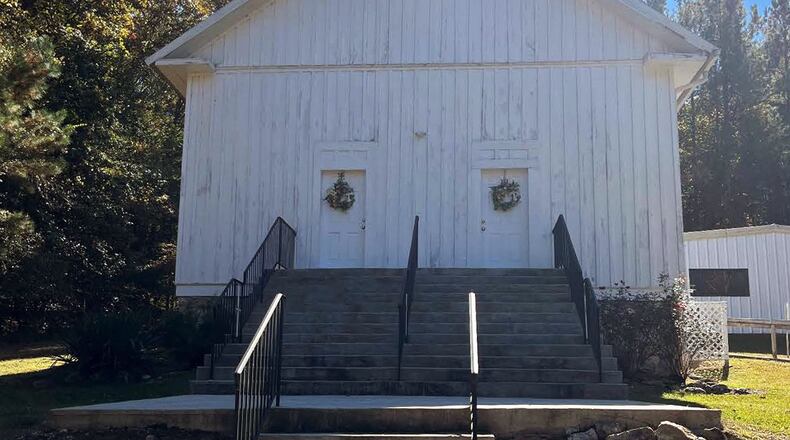Two Georgia-based churches will receive funding from a new national grant program designed to preserve historic Black churches, according to a press release sent by the National Trust for Historic Preservation on Monday.
First Bryan Baptist Church in Savannah and Chubb Chapel United Methodist Church in Cave Spring are among the 35 recipients of the first round of funding. Preserving Black Churches is an initiative sponsored by trust’s African-American Cultural Heritage Action Fund and is designed to assist historic Black churches across country with restoring their buildings and maintaining their cultural legacies.
“The intention of the program is to advance long-term and sustainable strategies that strengthen stewardship and asset management, interpretation and programming and fundraising activities for historic Black churches nationwide,” said Brent Leggs, executive director of the African-American Cultural Heritage Action Fund.
Credit: First Bryan Baptist Church
Credit: First Bryan Baptist Church
The $20 million program is funded by Lilly Endowment, an Indiana-based foundation that supports religious, educational and community development projects. The first round of the program totals $4 million. First Bryan Baptist Church will receive $175,000, and Chubb Chapel will receive $50,000 in capital project grants. Leggs said churches can expect to receive the grants within the next 2-3 months, depending on how quickly recipients can complete the program’s grant approval process.
Churches were chosen via a multi-phase evaluation system. Leggs said his team received more than 1,200 proposals over the past seven months. From there, 80 churches were chosen to submit grant applications, and 35 of those were selected as final recipients. Leggs said he wanted the program’s selection to highlight diversity of a church’s architecture and its background story — being intentional in not only choosing those associated with the civil rights movement.
“Since our nation was founded, Black churches have been at the forefront of democratic reform in our society,” Leggs said. “They are not just places of religion, but they are places of social justice, activism and culture. Unfortunately, despite their important role, many Black churches are facing all kinds of preservation threats such as maintenance, insufficient funding, aging congregation with limited incomes or vacancy and threats of demolition, so the intention of our investment is to amplify these threats and to build public awareness and a national ethic for the preservation of historic Black churches.”
Credit: Clemmie Whatley
Credit: Clemmie Whatley
Organized by Andrew Bryan, a former slave, in 1788, First Bryan is considered one of the oldest Black Baptist churches in the country. The grant will be used for multiple restoration projects for the building to include roofing, plaster, and stained-glass windows.
Founded in 1870, Chubb Chapel United Methodist Church was built by the Chubb family, who came to Georgia from North Carolina in the 1860′s and established Chubbtown, a self-sufficient Black settlement. The church is the only remaining building from the historic town. Grant funds will help address the building’s deteriorating features.
“From one room praise houses to unprecedented metropolitan mega churches, Black churches since slavery times have been the heart and soul of the African American community,” said historian and filmmaker Dr. Henry Louis Gates, who serves as the national advisory councilmember for the African-American Cultural Heritage Action Fund. “So, it is inspiring to see the action fund’s commitment to preserving their history and their physical structures. After all, these are our sacred sites, which our ancestors built from the ground up, and we must do everything we can to ensure their survival. Preserving these structures is a visible way of preserving a crucial chapter of Black history.”
For more information on the Preserving Black Churches initiative, visit savingplaces.org/blackchurches.
About the Author





